Shunyao Wu
Proactively Predicting Dynamic 6G Link Blockages Using LiDAR and In-Band Signatures
Nov 17, 2022Abstract:Line-of-sight link blockages represent a key challenge for the reliability and latency of millimeter wave (mmWave) and terahertz (THz) communication networks. To address this challenge, this paper leverages mmWave and LiDAR sensory data to provide awareness about the communication environment and proactively predict dynamic link blockages before they occur. This allows the network to make proactive decisions for hand-off/beam switching, enhancing the network reliability and latency. More specifically, this paper addresses the following key questions: (i) Can we predict a line-of-sight link blockage, before it happens, using in-band mmWave/THz signal and LiDAR sensing data? (ii) Can we also predict when this blockage will occur? (iii) Can we predict the blockage duration? And (iv) can we predict the direction of the moving blockage? For that, we develop machine learning solutions that learn special patterns of the received signal and sensory data, which we call \textit{pre-blockage signatures}, to infer future blockages. To evaluate the proposed approaches, we build a large-scale real-world dataset that comprises co-existing LiDAR and mmWave communication measurements in outdoor vehicular scenarios. Then, we develop an efficient LiDAR data denoising algorithm that applies some pre-processing to the LiDAR data. Based on the real-world dataset, the developed approaches are shown to achieve above 95\% accuracy in predicting blockages occurring within 100 ms and more than 80\% prediction accuracy for blockages occurring within one second. Given this future blockage prediction capability, the paper also shows that the developed solutions can achieve an order of magnitude saving in network latency, which further highlights the potential of the developed blockage prediction solutions for wireless networks.
LiDAR-Aided Mobile Blockage Prediction in Real-World Millimeter Wave Systems
Nov 18, 2021
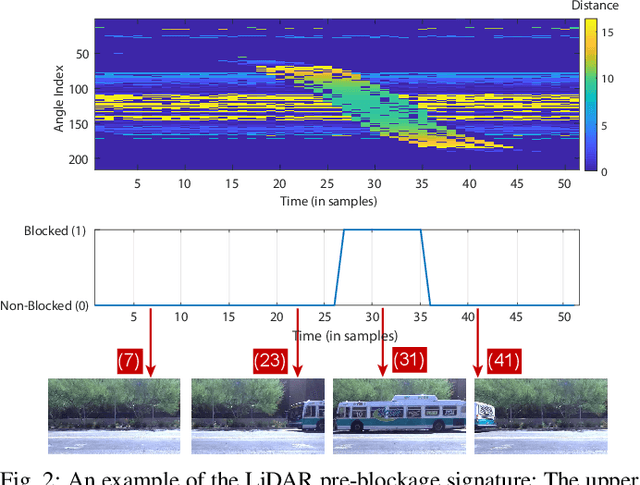


Abstract:Line-of-sight link blockages represent a key challenge for the reliability and latency of millimeter wave (mmWave) and terahertz (THz) communication networks. This paper proposes to leverage LiDAR sensory data to provide awareness about the communication environment and proactively predict dynamic link blockages before they happen. This allows the network to make proactive decisions for hand-off/beam switching which enhances its reliability and latency. We formulate the LiDAR-aided blockage prediction problem and present the first real-world demonstration for LiDAR-aided blockage prediction in mmWave systems. In particular, we construct a large-scale real-world dataset, based on the DeepSense 6G structure, that comprises co-existing LiDAR and mmWave communication measurements in outdoor vehicular scenarios. Then, we develop an efficient LiDAR data denoising (static cluster removal) algorithm and a machine learning model that proactively predicts dynamic link blockages. Based on the real-world dataset, our LiDAR-aided approach is shown to achieve 95\% accuracy in predicting blockages happening within 100ms and more than 80\% prediction accuracy for blockages happening within one second. If used for proactive hand-off, the proposed solutions can potentially provide an order of magnitude saving in the network latency, which highlights a promising direction for addressing the blockage challenges in mmWave/sub-THz networks.
Blockage Prediction Using Wireless Signatures: Deep Learning Enables Real-World Demonstration
Nov 16, 2021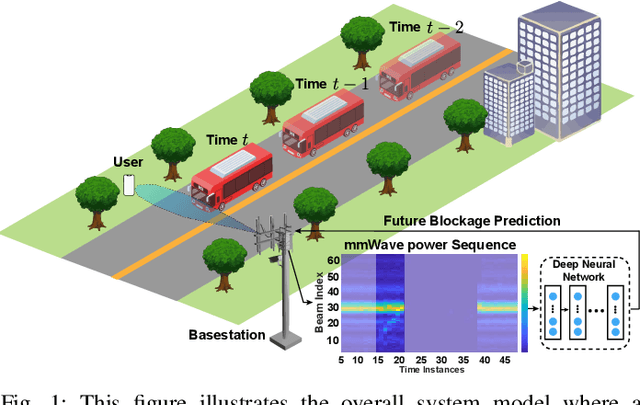
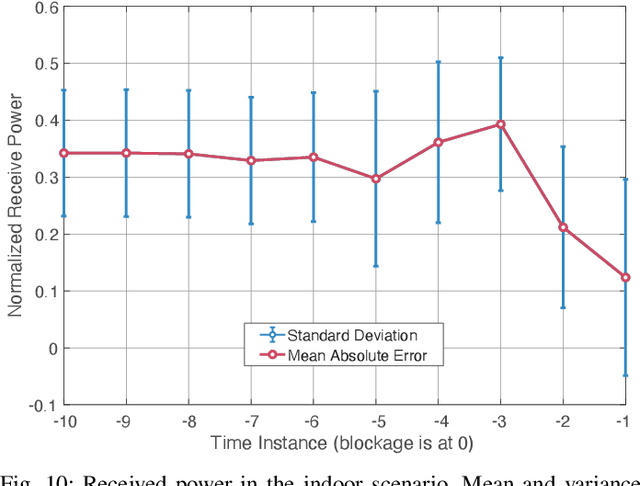
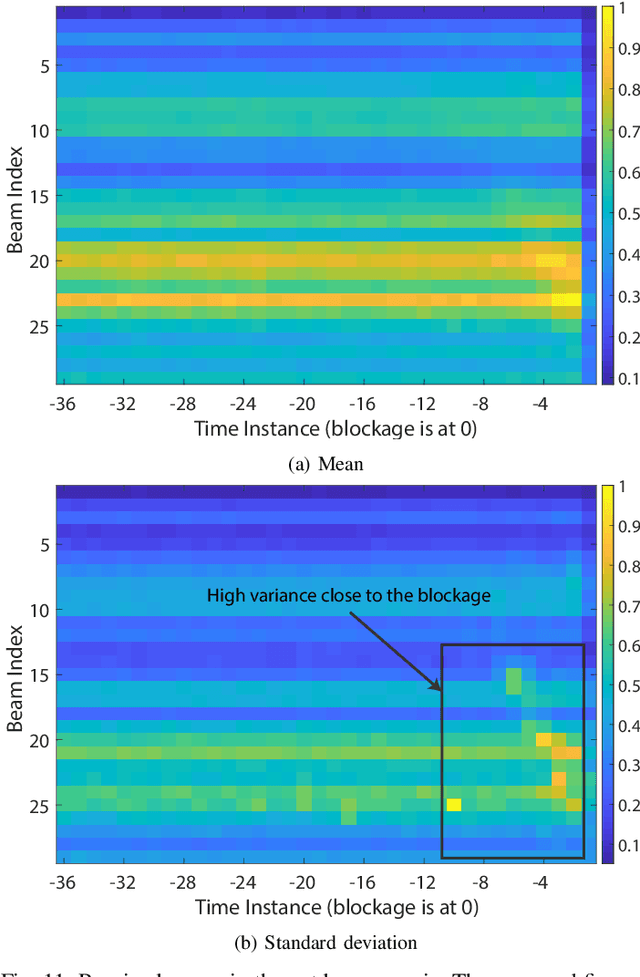
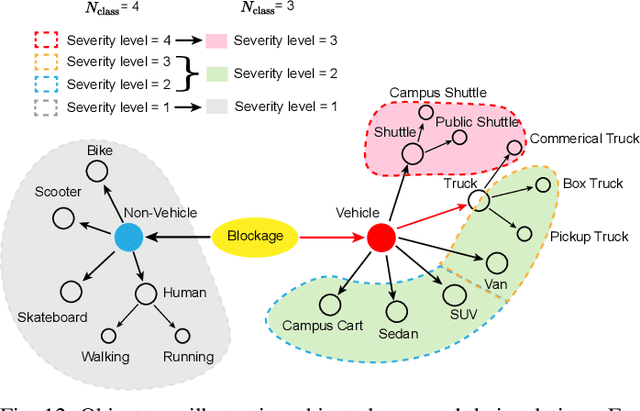
Abstract:Overcoming the link blockage challenges is essential for enhancing the reliability and latency of millimeter wave (mmWave) and sub-terahertz (sub-THz) communication networks. Previous approaches relied mainly on either (i) multiple-connectivity, which under-utilizes the network resources, or on (ii) the use of out-of-band and non-RF sensors to predict link blockages, which is associated with increased cost and system complexity. In this paper, we propose a novel solution that relies only on in-band mmWave wireless measurements to proactively predict future dynamic line-of-sight (LOS) link blockages. The proposed solution utilizes deep neural networks and special patterns of received signal power, that we call pre-blockage wireless signatures to infer future blockages. Specifically, the developed machine learning models attempt to predict: (i) If a future blockage will occur? (ii) When will this blockage happen? (iii) What is the type of the blockage? And (iv) what is the direction of the moving blockage? To evaluate our proposed approach, we build a large-scale real-world dataset comprising nearly $0.5$ million data points (mmWave measurements) for both indoor and outdoor blockage scenarios. The results, using this dataset, show that the proposed approach can successfully predict the occurrence of future dynamic blockages with more than 85\% accuracy. Further, for the outdoor scenario with highly-mobile vehicular blockages, the proposed model can predict the exact time of the future blockage with less than $80$ms error for blockages happening within the future $500$ms. These results, among others, highlight the promising gains of the proposed proactive blockage prediction solution which could potentially enhance the reliability and latency of future wireless networks.
Deep Learning for Moving Blockage Prediction using Real Millimeter Wave Measurements
Feb 08, 2021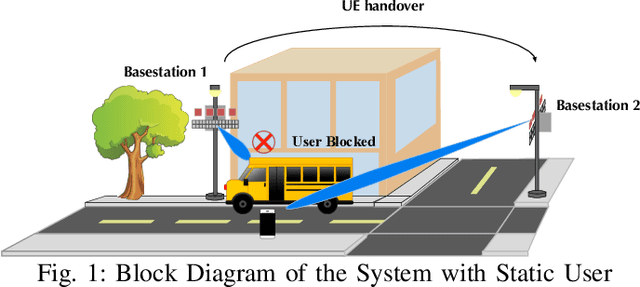
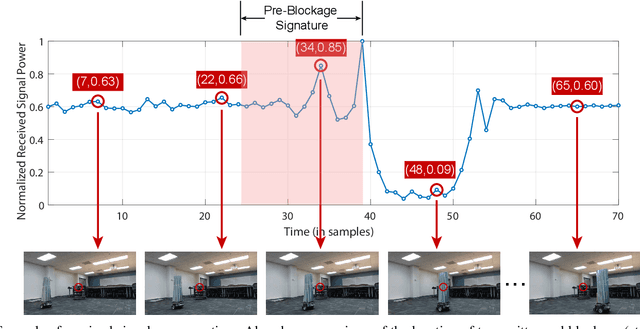
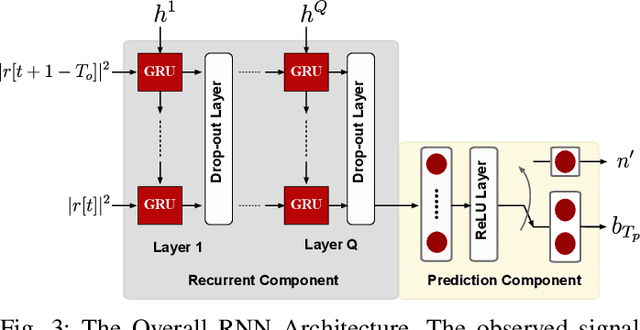
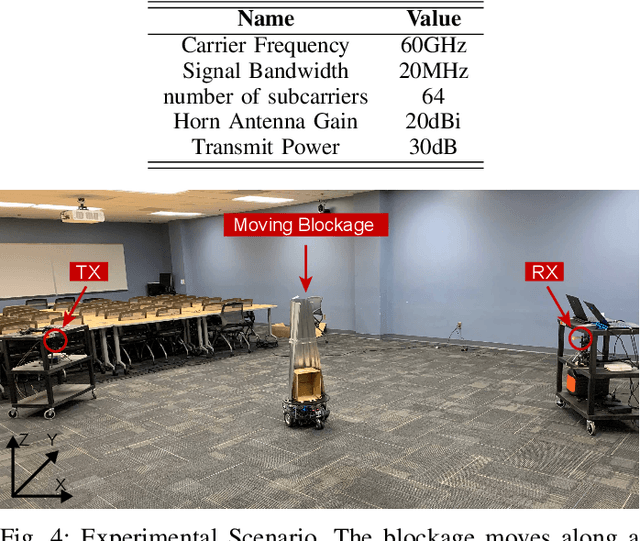
Abstract:Millimeter wave (mmWave) communication is a key component of 5G and beyond. Harvesting the gains of the large bandwidth and low latency at mmWave systems, however, is challenged by the sensitivity of mmWave signals to blockages; a sudden blockage in the line of sight (LOS) link leads to abrupt disconnection, which affects the reliability of the network. In addition, searching for an alternative base station to re-establish the link could result in needless latency overhead. In this paper, we address these challenges collectively by utilizing machine learning to anticipate dynamic blockages proactively. The proposed approach sees a machine learning algorithm learning to predict future blockages by observing what we refer to as the pre-blockage signature. To evaluate our proposed approach, we build a mmWave communication setup with a moving blockage and collect a dataset of received power sequences. Simulation results on a real dataset show that blockage occurrence could be predicted with more than 85% accuracy and the exact time instance of blockage occurrence can be obtained with low error. This highlights the potential of the proposed solution for dynamic blockage prediction and proactive hand-off, which enhances the reliability and latency of future wireless networks.
 Add to Chrome
Add to Chrome Add to Firefox
Add to Firefox Add to Edge
Add to Edge